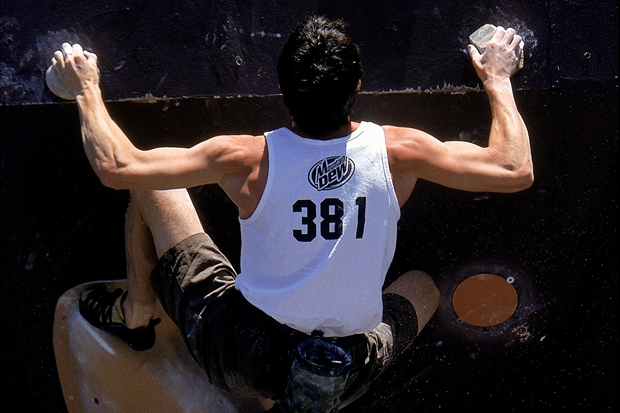For anyone who knows or cares about rock climbing — a minority sport if ever there was one, albeit pretty extreme — the turn of the year was heaven. Newspapers, magazines and TV bulletins were full of one specific, highly photogenic though very technical event: the first free ascent of a climb on Yosemite’s mighty El Capitan face called Dawn Wall. It was 3,000 ft and 32 pitches long, and rated the hardest pure rock climb in the world. The two climbers, Tommy Caldwell and Kevin Jorgeson, spent 19 days on the face, but years preparing and training for it.
This is, for the time being, the ultimate climb, very difficult but also very safe, with ropes and other gear used to protect the climbers, and entirely free in that they never used any artificial aids. It is the high point of a certain type of highly gymnastic climbing culture: practising pitches, working out hard sequences, an insane training schedule, all in the pursuit of pure difficulty. And the birthplace of this culture was in Britain, on the remorselessly overhanging limestone walls of north Wales and the Peak District, in the late 1980s. The further climbing moves from that period, the more pivotal it becomes, like the Sixties for music.
It is the subject of a compelling new book called Statement: The Ben Moon Story by Ed Douglas. Moon almost single-handedly revolutionised elite rock-climbing. He was the first person to climb at the grade of 9a, the hardest level in the world, on a route he called Hubble, after the famous astronomer, on Raven Tor. Twenty-five years on it is still a benchmark. It was a breakthrough in the same way as Bob Beamon jumping out of the long jump pit was in 1968. Before Moon, recreational weekend climbers knew what the hardest routes entailed and could even envisage repeating them one day. After his arrival, hard climbing moved into another league of possibility. Legendary figures from the golden age of climbing and mountaineering like Joe Brown and Don Whillans could be plumbers in the week and do the hardest routes at the weekend. Now only the pros could get close. An ordinary person, however fit and talented, is as likely to get off the ground on one of Moon’s climbs as a club weekend athlete is to run 100 metres in less than ten seconds.
Douglas has named his book after the ferocious climb that first bought Moon to the attention of the climbing world, Statement of Youth. The route is on a cliff called Lower Pen Trwyn, a mecca for hard climbing near Llandudno. Statement is a 70ft overhanging wall, involving dangling from first one heel, then the other, jumping for minute finger-pockets, and exhausting continual effort. It took Moon five days to practise the moves before completing it in one ascent, and was immediately recognised as the hardest climb in the country. Not bad for a pale-faced 18-year-old with shoulder-length dreadlocks, who lived in a cave under the cliff. Moon is now nearing 50, as lean and hard as a diamond, and still at ease on some of the hardest climbs around. For anybody who has ever pulled on a pair of climbing boots, his story is a totem of the art of the possible.
A very different type of fitness will be on display this weekend, with the final Six Nations matches. Isn’t it odd — and encouraging — that England are scoring three tries a match and all we are talking about is the chances they have frittered? Think how good Lancaster’s team could be if they knew when to pass (and not to chuck the ball forwards) and played with two boots on instead of one. So far, England have scored 11 tries, Ireland and Wales have nine between them: in entertainment terms, England are more than twice the value of their rivals.
Roger Alton is executive editor of the Times.







Comments